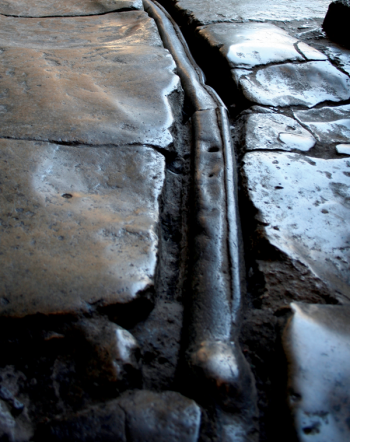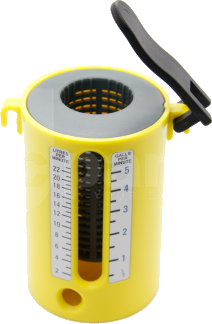Cold Water Solutions
We all take our cold water supply for granted these days. The advent of the modern supply network means that the vast majority of us get a ready supply of drinking water for our daily needs.

In outlying areas, some people still rely on wells or borehole supplies but even these can now be chemically treated to make them safe for consumption.
The truth is we rely on our cold water supply a lot more than we acknowledge.
All of our food preparation, bathing and sanitary requirements rely upon it.
Whether you have water supplied from the local authority network or from an independent source we all depend upon the incoming cold mains supply.

Supply by pipework from a mains water source isn't a new idea. Indeed if you have been fortunate enough to visit Herculaneum or Pompeii you will have seen at first hand the lead pipes made by the Romans to make a supply network of clean water to their Villas, Baths, and Shops.
Most of us who get supplied by a water authority have a supply (Service or Communication) pipe from the cold main into our property. The water authorities are responsible for the main but we are responsible for the Service pipe from the main into our property.
Over the years a number of different materials have been used for the supply pipes including Lead, Iron, Steel, Copper and in later years various forms of plastics.
Currently, the most commonly used pipe material is Blue Alkathene or MDPE.
It is probably true to say that the bore of supply pipes over the years has gradually increased. This because our consumer demand for water supplies has also increased dramatically.
We are now discovering problems with the materials we have used historically.
Lead is commonly known to be poisonous. There are still Lead service pipes in use today. Anybody with a Lead Pipe should seriously consider getting it replaced. If running drinking water let it run for 30 to 60 seconds or so before using it. This not an absolute rule and you should contact a local Water Regulations qualified plumber, WRAS, or your local water authority if you are in any doubt about lead in your water.

Old iron and steel pipework is subject to serious corrosion and will also often need replacing.
The bore of lead pipework tends to be less than other pipe materials. But other forms of pipes may have a smaller bore than is currently deemed to be suitable.
Even some plastics used in the 70s and 80s were still of a relatively narrow bore with internal bores as small as 12mm.
Why are we commenting so much on the size of the Service pipe? We discussed earlier that our modern water use requirements are much greater than in years gone by.
If you have a low incoming cold water flow rate and or working pressure it can be a serious issue and prevent the use of a lot of modern plumbing equipment.

Combination Boilers, Unvented Cylinders, Thermostatic showers and some of our day to day domestic appliances all have a minimum flow and pressure requirement. In a property with multiple shower outlets, the problem is magnified.
With the advent of modern plumbing systems in our houses, if your property had a poor supply of water, this was overcome by the use of a large cold water storage cistern in your loft. This could store a large amount of water to provide cold water for bathing washing etc. It would also supply the cold water to the hot water cylinder as they came into use.
Typically the cold tap in the kitchen was direct from the incoming cold main to provide a drinking water outlet.
However, the water from the cold water cistern was not much higher than the points of use and therefore provided little “Head” or water pressure resulting in low pressure and flow rates of both hot and cold water.
How Do I Know Whether I have a Low Flow Or Pressure Water Supply?
Low flow or pressure tends to become noticeable as an issue when an upgrade or new addition to your plumbing installation is planned.

Flow rate and pressures can be measured for you by your plumber.
When measuring the flow rate of the water supply into your property a plumber will use a Flow Cup or Weir Gauge to measure the flow rate in liters per minute. This will tell the plumber how much water is available for any planned plumbing work and installations in your property.
The plumber should also measure the static and working pressure of your incoming cold water supply. This is as important as the flow rate.
Pressure and flow rates can vary depending upon the time of day as the network use varies throughout the day.
It is not uncommon for the pressure to be too HIGH.
High pressure can be a serious problem as it can cause damage to plumbing installations and excessive wear on parts and materials.
It can be the cause of water hammer and pipe vibrations.
Your plumber can advise on the use of pressure reducing valves to address high pressure.
What Do I do If I have Low Flow and or Pressure?
Initially, we would recommend that you contact your local authority. Ask them to check the flow rate and water pressure at the main where your service pipe joins.
The local authority will be able to check that there are no blockages in the connection to your Service pipe, or on the water meter if fitted. They will also be able to tell if that branch of the main is operating correctly.
Local Water authorities operate on a minimum working pressure for your property. Even if they meet their minimum standard this may still not be enough for your needs.
In the following page, we have outlined some solutions to the low flow rate and pressure problems.